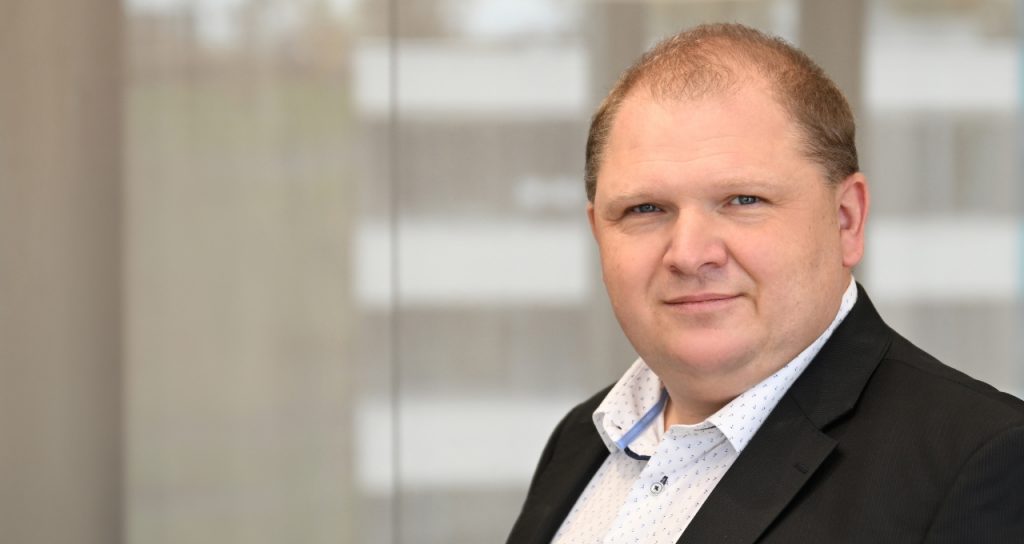As the lead designer of high-voltage and extra-high-voltage electrical lines at Elektrotrans in the Czech Republic, Luděk Krba helps supply electricity to millions of homes and businesses.
Luděk Krba was born and bred in Kladno, a former mining town near Prague in the Czech Republic. Economic activity in the region largely revolves around the massive Poldi Kladno steelworks: “My parents and family members worked there, and I was a trainee there myself,” he says. “When I decided to enrol in an electrotechnical college, I thought I would end up managing energy systems in a major industrial business like Poldi Kladno.”
But while studying at Czech Technical University in Prague (ČVUT), with help from friends in the electrotechnology faculty, Luděk Krba found part-time work as a designer at Elektrovod, a company specialised in the design and manufacture of high-voltage and extra-high-voltage electrical lines. “I was only working on simple tasks, but I could see there were enormous margins for progress and innovation. I created an Excel spreadsheet for certain types of calculations, part of which is still used in the design process today.”
In spring 1999, Luděk Krba joined the new company Elektrotrans, formed a year earlier in the Czech market for electricity transmission and distribution services. The business, which would be acquired by VINCI Energies in 2008 to become part of the Omexom network, immediately struck him as “More progressive, with innovative methods”. Since then, as Lead Designer, he has managed a team providing comprehensive design services for new and reconstructed electrical lines.
Responding to increasing consumption
According to Luděk Krba, his role is “To resolve all the problems you might encounter on this type of project. Whether it’s a new line or a reconstruction, the work is similar, though new constructions are more difficult to manage from a legal perspective. Most of our work comes from reconstructions, because the infrastructure is aging – in some cases over 50 years old – and needs to be renovated. We are currently deciding, for example, whether we should demolish existing towers to build a new line, or use special conductors.”
“BIM, digital twins and modelling the life cycle of power lines: a significant change is under way.”
In addition to the renovation of aging power lines, an increase in transmission capacity is required to meet increasing demand for electricity, driven by the expansion in electrical mobility and growing comfort-related demand (climate control in summer and heat pumps in winter).
Luděk Krba offers an alternative explanation for the escalating number of projects: “The need to improve operational capacities across the network. Lines are often built to offer alternative routing, which allows us to shut down a line if necessary. New transmission infrastructure is also needed to distribute the electricity being generated from new energy sources.”
A major digitalisation project
In short, projects are abundant and extremely diverse. For example, the Línĕ gigafactory near Plzeň is powered by a 400 kV line and a huge solar farm, which required the installation of a 700 A line to replace the existing infrastructure, which could only handle 500 A.
But Luděk Krba’s largest ongoing project, which began in 2012, is the “Brand-new V406/407 line linking Kočín, near the Temelín nuclear power plant, and Mírovka, a substation close to Havlíčkův Brod”. A key milestone will be reached in spring 2025 with the delivery of installation documentation for 121 km of electrical lines – “The longest in the Czech Republic”.
Luděk Krba underscores the importance of responsiveness in his line of work: “I’ll never forget 14 August 2003, when a storm near the town of Kadaň, in the west of the Czech Republic, brought down the V465/466 line. On the Friday, we were asked to design a tower reconstruction project. By the following Wednesday, the project was complete!”
Responsiveness is important, but precision is also key. In this respect, Luděk Krba welcomes the digitalisation of his profession. “We are increasingly talking about BIM [Building Information Modelling], digital twins, advanced design, and modelling the life cycle of power lines,” he explains. “This is a significant change that will definitely help in our work. Our biggest customer, ČEPS [the Czech electricity distribution network operator], will be launching a pilot project this year, and I’m curious to see the results.”
In the meantime, this afficionado of electrical lines never misses an opportunity to see how things are done elsewhere, even on holiday. He was recently in the Beskid Mountains, a series of mountain ranges in the Carpathians, where a 400 kV line is currently under reconstruction: “I couldn’t help taking a look and comparing it with what we’re doing!”
06/10/2025
